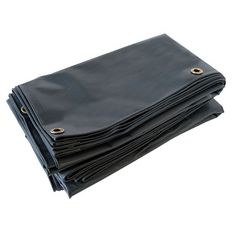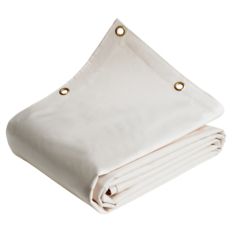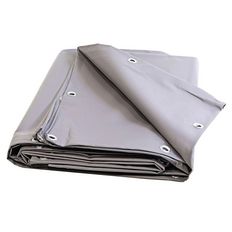
7 Best Practices to Extend a Roof Covering
6


Does your roof need to be repaired before repairs? Recent thunderstorms have damaged your roof and you absolutely need to renovate the damaged parts? You want to change the roof covering of your home to install more environmentally friendly and energy-efficient materials?
The time of the work, whether it is a construction site or renovation, your house will be exposed and lose its protective cover.
So that the entire building does not suffer damage other than that of the roof, remember to protect the heights of the house by installing special protective plastic sheets roofing.
Here are 7 best practices and tips to follow before installing tarpaulin:
1. Avoid "patchworks" of tarps
This is not necessarily the case, but some roof areas to be covered can be extended. In this context, difficult to find the model of tarpaulin that will suit to cover the entire surface on its own. Nevertheless, it is better to avoid the patchwork of tarps, that is, the superposition of several tarps assembled together so as to cover all or part of the roof. This solution is not ideal because the connections between the tarps are non-existent: this absence of a tight seal between the tarps could be a source of leakage in case of rain. The roof cover would no longer fulfill its role of waterproof protection. This is why it is strongly recommended to use a single plastic sheet.
You can also send us your free quote request by filling out our form. We make custom-made roofing sheets, customized according to the dimensions of your roof or the precisely damaged part. A practical solution that avoids using a set of tarps superimposed on each other.
2. Buy a tarpaulin with a lifespan greater than 5 years (stronger, more waterproof, etc.)
Opt for a tarpaulin type truck, a tarpaulin called heavy because sufficiently thick and resistant. Prefer models made of PVC, a material that is durable even in outdoor applications and weather exposure.
Your roof cover must have a lifespan of more than 5 years: this guarantee of solidity guarantees a perfect hold whatever the weather conditions or the duration of use.
3. Buy a tarpaulin with eyelets so you can stretch it perfectly with a sandow
The metal eyelets allow you to slide a rope or bungees through these reinforced openings. Thanks to them, you can fix the roof cover securely and easily: the eyelets also make it possible to tighten the cover and to plate it to the maximum on the roof.
4. Install tarps from bottom to top of roof
If you have several tarps to install and fix on the roof (taking into account the tip 1 which is to avoid patchwork, proceed by step to limit runoff and possible infiltration between the tarps. To do this, lay your first tarp from the edge of the roof, where the gutters are located, and make a «vertical strip» of tarps, making sure that the last fixed is always higher and above the previous one.
5. Make sure the tarp flows directly into the gutter
In case of heavy rain, it is better to promote the flow of water by optimizing the position of the roof protection covers. For this, and in accordance with the advice 4 which is to position the tarpaulins one above the other starting from the edge of the roof and then going up vertically towards the end, think of attaching your first tarpaulin (the one closest to the edge of the roof therefore) just above the gutter.
In this way, the rain runs on the tarpaulin directly into the gutter, for a fast and guaranteed evacuation without infiltration.
Remember that the tarps used to protect the frame during renovation or repair work are 100% waterproof and therefore leave nothing to filter.
6. Wait a day without even a slight breeze
Under no circumstances should you climb on the roof alone! Ask for help and assistance from a trusted third party, able to stay calm even at several meters above sea level.
Similarly, only intervene if the weather is favorable: wait for a beautiful day without wind or risk of rain. These conditions are essential for your safety!
7. If you can, have your tarp installed by professionals to avoid risks
Last but not least: do this installation of tarpaulin on roof only if the situation is urgent AND you are physically able to do it. There is no point in playing superheroes, better to call on professional roofers rather than put yourself in danger. Prefer to wait for the intervention of experts mastering their profession!












